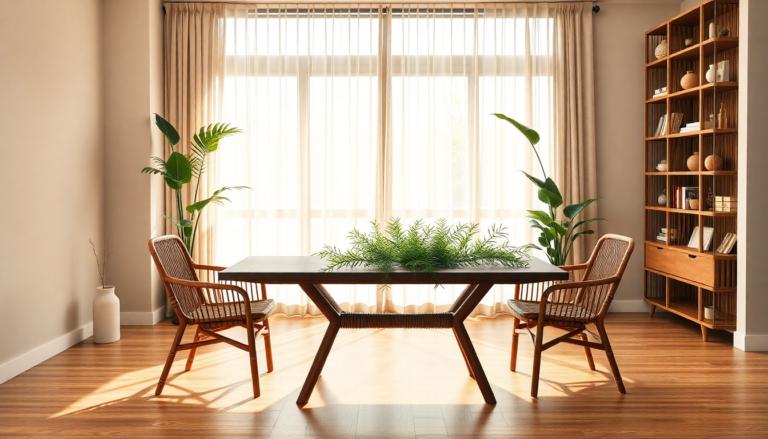Argomenti trattati
In the ever-evolving world of interior design, change is the only constant. With trends shifting like the seasons, new materials are stepping into the spotlight, and one that’s really making waves is bamboo. Known for its stunning natural beauty, sustainability, and versatility, bamboo is not just a trend for coastal homes anymore; it’s capturing the hearts of urban dwellers too. Are you curious about how this eco-friendly material can refresh your living space?
The Allure of Bamboo in Modern Design
What makes bamboo so special? Its rise in popularity can be traced back to its serene aesthetic and remarkable properties. Unlike traditional hardwoods, bamboo exudes a softness that’s both inviting and sophisticated. Interior designer Lauren Saab puts it perfectly when she says that bamboo’s linear grain and light tones create a refined look that feels airy rather than heavy. This gentle rhythm and tonal variation resonate well with contemporary design trends that prioritize warmth and intentionality.
Once upon a time, bamboo was mostly used for practical purposes—think kitchens and outdoor furniture. But as sustainability has become a priority for many homeowners, its potential as a stylish design element has skyrocketed. Colby Murphy, founder of SouthLoft, points out that bamboo grows much faster than traditional lumber trees, making it a truly sustainable choice. With its unique aesthetic and impressive durability, bamboo is quickly becoming a go-to material for home decor.
Innovative Uses of Bamboo in Interiors
One of the most exciting things about bamboo is its incredible flexibility in design. Unlike more rigid materials, bamboo can be molded into various shapes, allowing designers to unleash their creativity. Take designer Allison Babcock, for example. She recently transformed a bamboo furniture set for a living room in the Hamptons by giving it a sleek black paint job and refreshing the cushions with vibrant performance fabric. The result? A lively, welcoming space that perfectly captures the essence of relaxation. Isn’t it amazing how a simple change can breathe new life into a room?
Bamboo’s lightweight nature also means you can easily rearrange furniture, creating dynamic spaces that adapt to your needs. Interior designer Melanie Bryant highlights how bamboo can bring a delightful touch to any part of the home, from guest bedrooms to sunrooms. By incorporating bamboo elements like baskets or side chairs, designers can add warmth and texture to even the most formal settings, elevating the overall vibe without losing sophistication.
Design Considerations for Bamboo Use
While bamboo has plenty of perks, it’s crucial to think about where you place it in your home. In high-gloss modern spaces, bamboo might stick out like a sore thumb, especially when paired with heavy metallics or ornate details. Saab suggests giving bamboo some room to breathe; natural light and understated styling can really enhance its unique texture and charm. Have you thought about how light plays a role in your design choices?
When it comes to choosing colors that work well with bamboo, less is often more. A restrained palette featuring earth tones and neutrals—like pale sand or soft olive—echoes bamboo’s natural depth and keeps the atmosphere calm. However, don’t shy away from deeper jewel tones; they can beautifully complement bamboo, adding richness without overshadowing its inherent beauty. By carefully curating your color choices around bamboo, you can create spaces that feel both harmonious and inviting.
As we embrace sustainable living practices more than ever, bamboo stands out—not just for its aesthetic appeal but also for its environmental benefits. This trend isn’t just a passing phase; it’s a significant movement in interior design that offers a stylish solution for those eager to merge elegance with eco-friendliness. Are you ready to explore how bamboo can transform your space?

